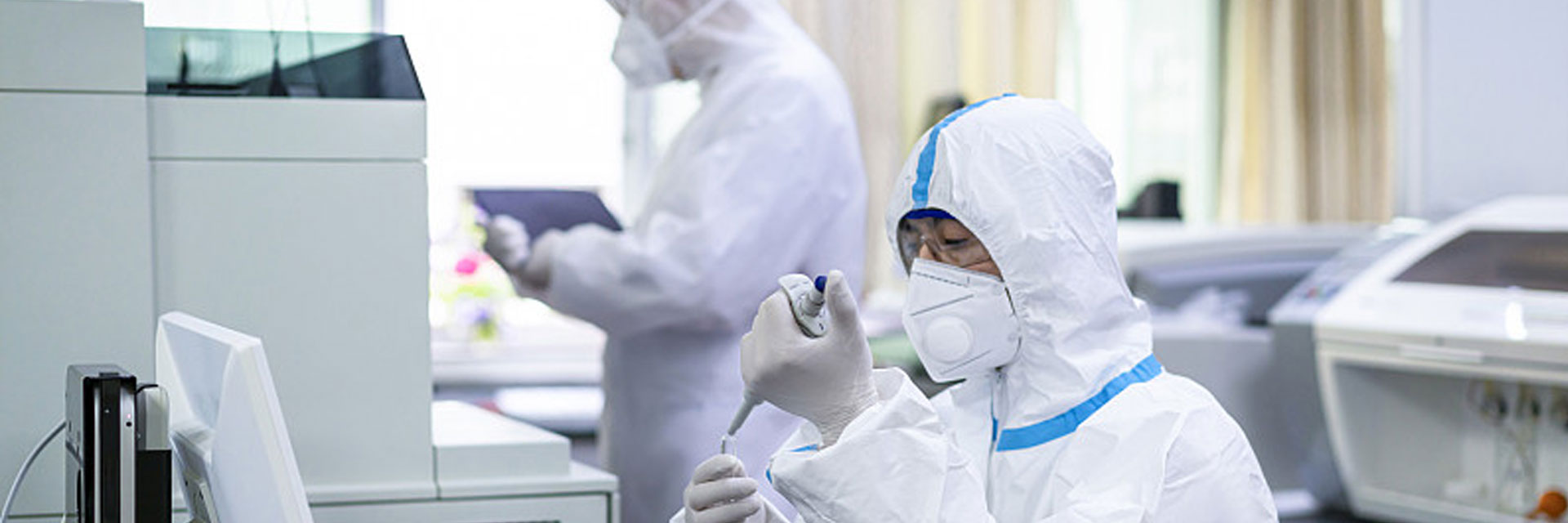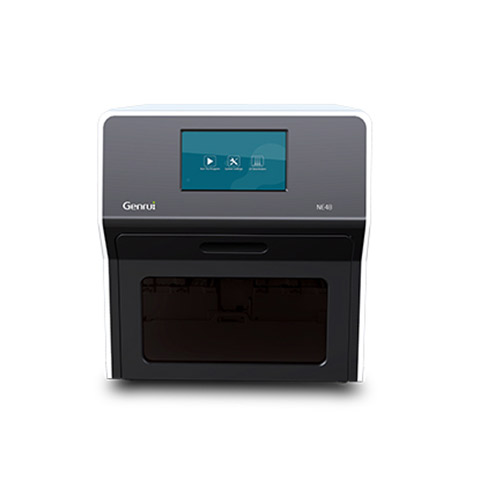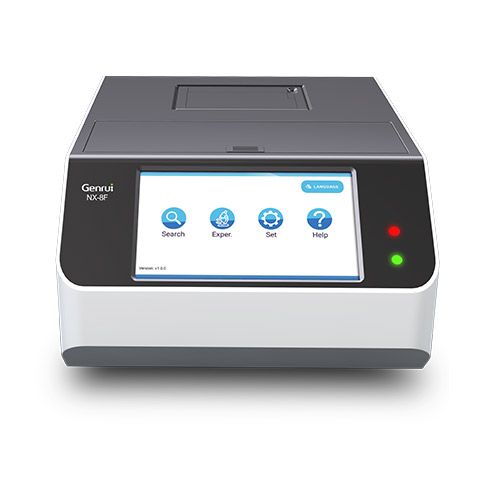
Molecular diagnosis is a technique that uses a molecular biology method to detect changes in the structure or expression level of genetic material in a patient. Molecular diagnosis testing is the main method of predicting the diagnosis, including both individual genetic disease and prenatal diagnosis. It's also a gold standard for the COVID-19 test.
Molecular diagnostic assays consist of two parts, the nucleic acid extraction part, and the nucleic acid detection part.
Genrui offers a fully-auto nucleic acid extraction instrument NE48 & NE98 use automatic magnetic bead extraction principle that can purify high-quality nucleic acids from a variety of sample types.
Save time and increase consistency by using Genrui's fully-auto nucleic acid extraction instruments for automated sample purification.
In response to the COVID-19 pandemic, Genrui also provides COVID-19 molecular detection kits that can be tested on the PCR detector together with the extracted high-purity nucleic acid. In addition to this, we also provide rapid detection kits for the new coronavirus.
Feb, 20, 2024
Nov, 16, 2023


The ability to extract nuclear acid is of primary importance to studying the genetic causes of disease and for the development of diagnostics and drugs.
It is also essential for forensic sciences, genome sequencing, detection of bacteria and viruses in the environment, and determination of paternity.
These steps include:
Destructs the tissues and the cells.
Remove proteins, lipids, and other contaminants from the nucleic acid.
Nuclear acid is protected by transferring it into water or in buffer solutions without hindering the progress of subsequent work.
Molecular diagnosis allows rapid detection by matching nucleic acid sequences, by testing viral antigens released during infection, or by the detection of the presence of increased antibodies specific to viral proteins.
Polymerase chain reaction (PCR) tests are used to detect genetic substances from certain biological sources, such as viruses. If a virus is infected during the test. Even if no longer infected, viral fragments can be detected by inspection.
According to a notification issued by the World Health Organization on the afternoon of the 26th: this mutant strain called B.1.1.529 has been identified by the organization as the highest-level "variant strain of concern" (VOC) and named Omicron.
The Omicron variant has many mutations. Compared with the original covid 19 variant, there are a total of 60 mutations: 50 non-synonymous mutations, 8 synonymous mutations and 2 non-coding mutations. Compared with the original virus, this variant is characterized by 30 amino acid changes, 3 small deletions and 1 small insertion in the spike protein, 15 of which are located in the receptor binding domain (residues 319-541). It has also made many changes and deletions in other genomic regions. In addition, this variant has three mutations at the furin cleavage site. Furin cleavage sites increase the infectivity of SARS-CoV-2.
In response to Omicron, timely detection of the new coronavirus and vaccination of the new coronavirus are the best way to prevent,Minimize going to crowded places or gatherings with a large number of participants, and take personal protection.
